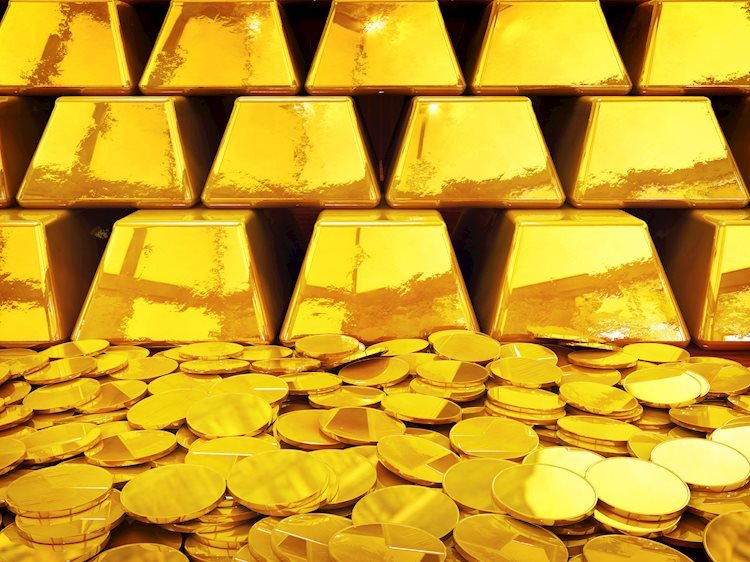Gold prices rose in India on Friday, according to data from India’s Multi Commodity Exchange (MCX).
Gold was priced at INR 62,014 per 10 grams, up by INR 259 from INR 61,755 on Thursday.
In terms of futures contracts, gold prices rose to INR 62,094 per 10 gz from INR 61,769 per 10 g.
Prices for silver futures fell to INR 71,839 per kg from INR 71,615 per kg.
| Big Indian city | The price of gold |
|---|---|
| Ahmedabad | 64,150 |
| Bombay | 63,990 |
| New Dilli | 64,135 |
| Chennai | 64,130 |
| Calcutta | 64,190 |
Global Market Moves: Comex Gold Price Draws Refuge Flows Amid Middle East Tensions
- US-led forces continue to clash with the Iran-backed Houthi group in the Red Sea, appearing to provide some support to safe-haven Comex Gold amid muted US dollar price action.
- Houthi rebels in Yemen fired two anti-ship ballistic missiles at a Greek-owned and operated tanker on Thursday, prompting the US to launch a fifth strike against Houthi targets in response.
- Pakistan launched a series of military strikes against terrorist hideouts in Iran’s Sistan-Baluchistan province, while the latter launched a planned air defense exercise from its Chabahar port near Pakistan.
- The USD is consolidating below its highest level since Dec. 13 touched earlier this week, even as reduced bets on a March rate cut by the Federal Reserve continue to act as a tailwind.
- Incoming resilient US macro data released this week suggested the economy is in good shape, giving the central bank room to keep interest rates higher for longer.
- Against the backdrop of upbeat US retail sales figures on Wednesday, data released on Thursday showed initial jobless claims fell to the lowest level since September 2022.
- Markets reacted quickly to the strong labor market report and are now pricing in just over a 50% chance of a rate cut at the March FOMC meeting, down from 75% a week ago.
- The yield on the benchmark US 10-year Treasury note hit its highest level since mid-December, which favors USD bulls and should limit gains in the unyielding yellow metal.
- Traders are now looking for near-term opportunities in US macro data – advance expectations for consumer sentiment and inflation in Michigan, along with existing home sales.
(An automation tool was used to create this post.)
Frequently Asked Questions About Gold
Gold has played a key role in human history as it has been widely used as a store of value and a medium of exchange. Nowadays, the precious metal, apart from its luster and use for jewelry, is widely seen as a safe haven, meaning it is considered a good investment in turbulent times. Gold is also widely seen as a hedge against inflation and currency depreciation because it does not rely on any particular issuer or government.
Central banks are the largest holders of gold. In their aim to support their currencies in turbulent times, central banks tend to diversify their reserves and buy gold to improve the perceived strength of the economy and currency. High gold reserves can be a source of confidence for a country’s solvency. Central banks added 1,136 tons of gold to their reserves in 2022, worth about $70 billion, according to data from the World Gold Council. This is the highest annual purchase since records began. Central banks from emerging economies such as China, India and Turkey are rapidly increasing their gold reserves.
Gold has an inverse correlation with the US dollar and US Treasuries, which are major reserves and safe-haven assets. When the dollar weakens, gold tends to rise, allowing investors and central banks to diversify their assets during turbulent times. Gold is also inversely correlated with risk assets. Stock market rallies tend to weaken the price of gold, while sell-offs in riskier markets tend to favor the precious metal.
The price can fluctuate due to a wide variety of factors. Geopolitical instability or fears of a deep recession can quickly escalate the price of gold due to its safe-haven status. As a lower-yielding asset, gold tends to rise with lower interest rates, while the higher cost of money typically weighs on the yellow metal. Still, most moves depend on how the US dollar (USD) behaves when the asset is priced in dollars (XAU/USD). A strong dollar tends to keep the price of gold in check, while a weaker dollar is likely to push gold prices up.

